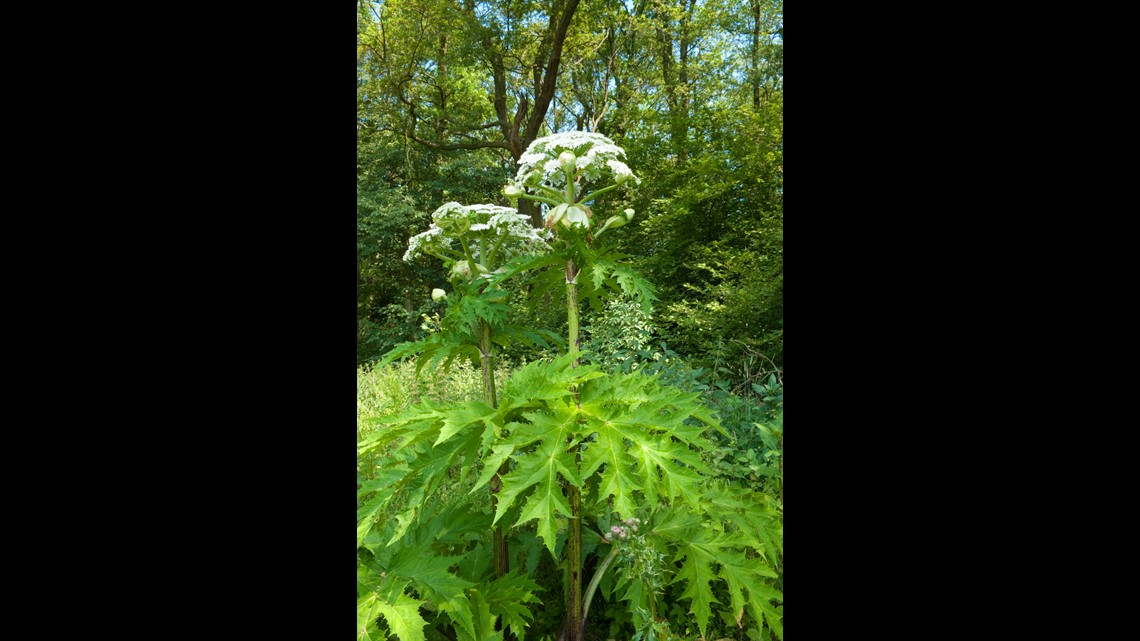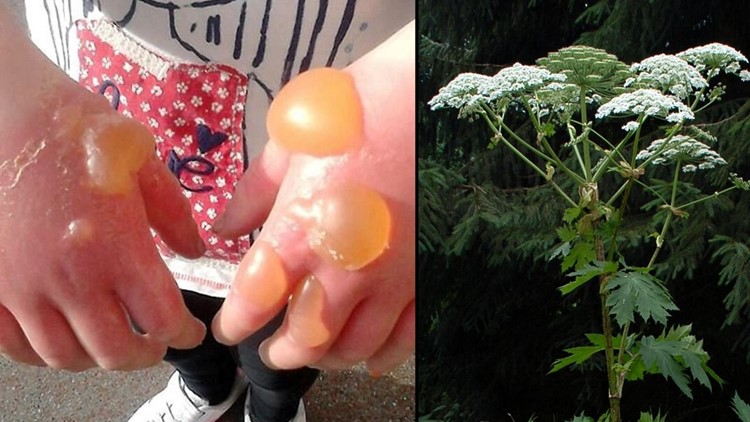

Oh, nature, will you ever run out of ways to make us uncomfortable?
As if poison ivy, mosquitoes and sunburn weren’t enough, it turns out that at least some of us are having to dodge a giant plant that can burn your skin when it’s exposed to the sun and make you blind. It’s called giant hogweed, and it’s nasty.
Social media started buzzing Tuesday over news that officials in Calhoun County, Michigan, had found some of the stuff growing on the side of the road, according to CNN affiliate WWMT.
“It’s not deadly, but it can certainly cause you an awful lot of discomfort,” WWMT quoted Calhoun County Environmental Health Director Paul Makoski as saying.
A Missouri woman learned that the hard way.
“I saw some weeds in the entryway where I worked, so I stopped and pulled six of them out of the ground by the roots, and within 24 hours, I had developed some blisters,” Marcie Kirkup told CNN affiliate KYTV.
“By the next morning, my face and nose was swollen, and my face was starting to get a crusty rash on it like a burn,” she said.
Kirkup may have been lucky. Experts say the oil that brings the discomfort can cause temporary or even permanent blindness if it gets into the eyes.
Giant hogweed is a native of the Caucasus region of Eurasia brought to the the UK and then the U.S. as — get this — a garden ornamental appreciated for its showy good looks.
It’s been found in parts of Maine, Massachusetts, Connecticut, New York, Pennsylvania, Michigan, Illinois, North Carolina, Washington state and Oregon, according to the U.S. Department of Agriculture. There are reports from Missouri and Washington, among other places.
It’s been making lots of news this summer in the UK, where it appears to be a much more widespread problem.
There, five youngsters suffered burns from the plant this summer near Manchester, including one whose arm was permanently scarred, according to the Telegraph newspaper. The newspaper also reported on a 10-year-old girl who suffered burns after handling the plant. She might need skin grafts, the newspaper reported.
U.S. residents probably shouldn’t worry too much about giant hogweed, however. Michigan’s Department of Agriculture and Rural Development says that even a “vigorous tromp in the woods” isn’t likely to expose you to the plant.
Experts advise learning what giant hogweed looks like: 8 feet to 15 feet tall, with large, compound leaves and a large flat head of dense white flowers. If you see it, they say, you should steer clear of it and call your local extension service, public health agency or giant hogweed hotline.
Giant hogweed is on the Pennsylvania Noxious Weed Control List. It is illegal to sell, plant or transport this species. If you believe that you have found a new population of this plant, please contact Melissa Bravo, PA Dept. of Agriculture, at 717-787-7204.



